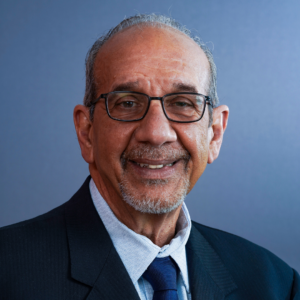Training Staff in Resident Transfers
| Training Staff in Resident Transfers This facility’s approach to transfer techniques yielded improved resident and staff safety-and lower costs BY ANDI SADOWSKI, RN, MS, LNHA |
| Minnesota Masonic Home North Ridge, located in a northern suburb of Minneapolis, includes 559 skilled nursing beds, 180 independent living apartments (with assisted living services available), 25 personal care suites, an adult day-care center serving approximately 65 individuals, and a child day-care center for employees’ children. |
| In 1998, each therapy discipline in our Rehabilitation Department was directed to choose, as its “theme for the year,” one modality on which to concentrate to provide education for the Nursing Department. Physical Therapy (PT) chose resident transfers, as this is the basis of frail elderly residents’ being able to engage in most activities of daily living-i.e., the essential building block for providing care to these residents. Beyond that, as one observer points out, “Musculoskeletal disorders-particularly back injuries sustained within the healthcare industry-are a major problem that must be addressed….”1 The number-one workers’ compensation event involving time away from work for the nursing assistant is the musculoskeletal injury. According to the Bureau of Labor Statistics, in 1998, 44% of lost time from occupational injuries was the result of strains and sprains, with most involving the back-and the occupation heading this list is the nursing assistant, with RNs in sixth place. Furthermore, 66% of all injuries suffered by nursing assistants and 59% of injuries suffered by RNs were strains and sprains.2 In our facility, back injuries represent 40% of all workers’ compensation injuries, with an additional 25% falling into the “muscle pull or strain” category. Our goal, therefore, was to improve resident care while reducing employee injuries. PT defined six transfers that met the requirement for all assisted transfers other than use of a mechanical lift. They called these “universal transfers.” They included: (1) sliding board, (2) one-person pivot, (3) front-to-back two-person pivot, (4) side-by-side two-person pivot, (5) lateral scoot, and (6) two-person lift. To educate staff on the use of these universal transfers, the therapists developed a video training program, also including a hands-on practice session, study packet, post-test, study guide with pictures for each nursing station, and a “button campaign” to generate interest in and recognition for completion of the program. Campaign posters were placed throughout the building, stating: “Universal Transfers-Ask someone with an orange button to find out more information.” Each PT employee wore an orange button/badge that said “Universal Transfers-Ask me.” Each employee trained received two hours of continuing education that included the video, study packets with post-test, and skill demonstration. After completing the program, each employee was tested on two randomly selected universal transfers. If the employee demonstrated these successfully, he or she “passed” the course and was awarded an orange button to be glued to the employee’s name badge. If the employee was unable to successfully demonstrate one or both of the assigned transfers, further training was scheduled, followed by re-testing. PT provided the training for nursing staff, which included all nursing assistants and selected nurses. The project was originally piloted with nursing assistants and restorative nursing assistants on one of the smaller nursing units, beginning in the fall of 1998, and the project continued until spring 2000. As the process continued, education on transfers was provided to the Therapeutic Recreation and Education Departments. Training was established for one nursing unit or department at a time and required support from all supervisors and department heads. During the original training blitz, 598 employees were trained. By May 2000, all universal transfers training had been incorporated into the curriculum for nursing education, including orientation and annual skill demonstrations. All nursing documentation forms were reviewed for inclusion of universal transfers terminology to ensure consistency of reporting throughout the facility. PT established an audit system and continues to randomly check 25 nursing employees each month for appropriate demonstration of the resident-required transfer, correct identification of the transfer on the nursing assistant care card (assignment form), and correct identification on the resident’s care plan. From an initial accuracy rate of 25%, staff has improved to an 85 to 87% accuracy rate. If an employee is found to be unable to accurately demonstrate the particular transfer, he or she is referred to the Education Department for further training. Since implementation of our universal transfers program, workers’ compensation data indicate that facility staff has experienced 28% fewer back/shoulder/neck-related injuries and 23% fewer muscle pull/strain injuries, and a 29% reduction of workers’ compensation injuries overall. The past two years have seen these reductions maintained, though not further decreased. The results were, and remain, well worth the effort in terms of quality care for residents, safety for employees, and financial savings in workers’ compensation dollars. NH |
| Andi Sadowski, RN, MS, LNHA, is director of support services for Minnesota Masonic Home North Ridge, Minneapolis. E-mail andi.sadowski@mnmasonic.org or visit www.mnmasonichomes.org for further information. To comment on this article, e-mail sadowski0803@nursinghomesmagazine.com. References 2. Bureau of Labor Statistics, 1998. |
Related Articles
Topics: Articles , Clinical , Facility management











